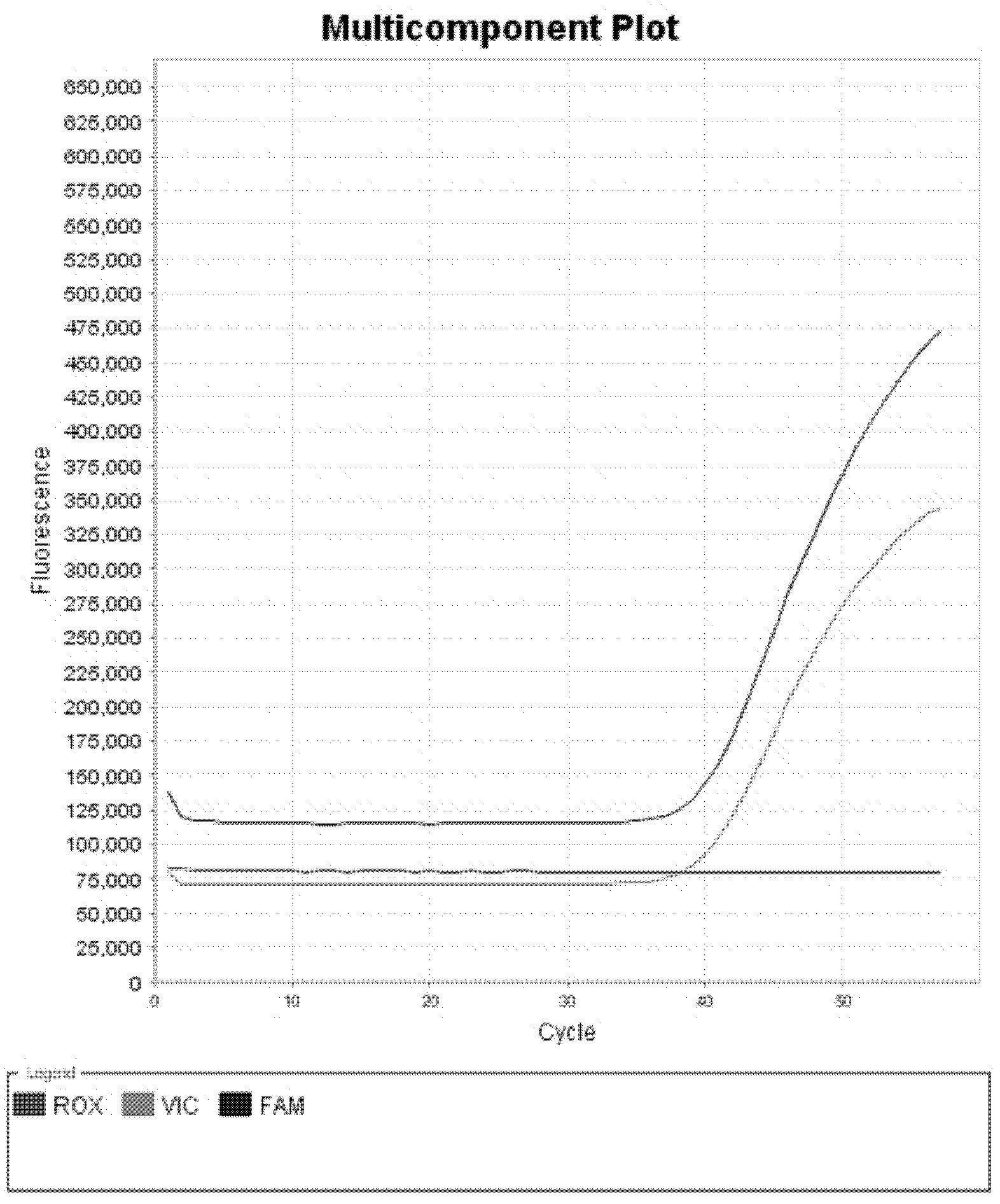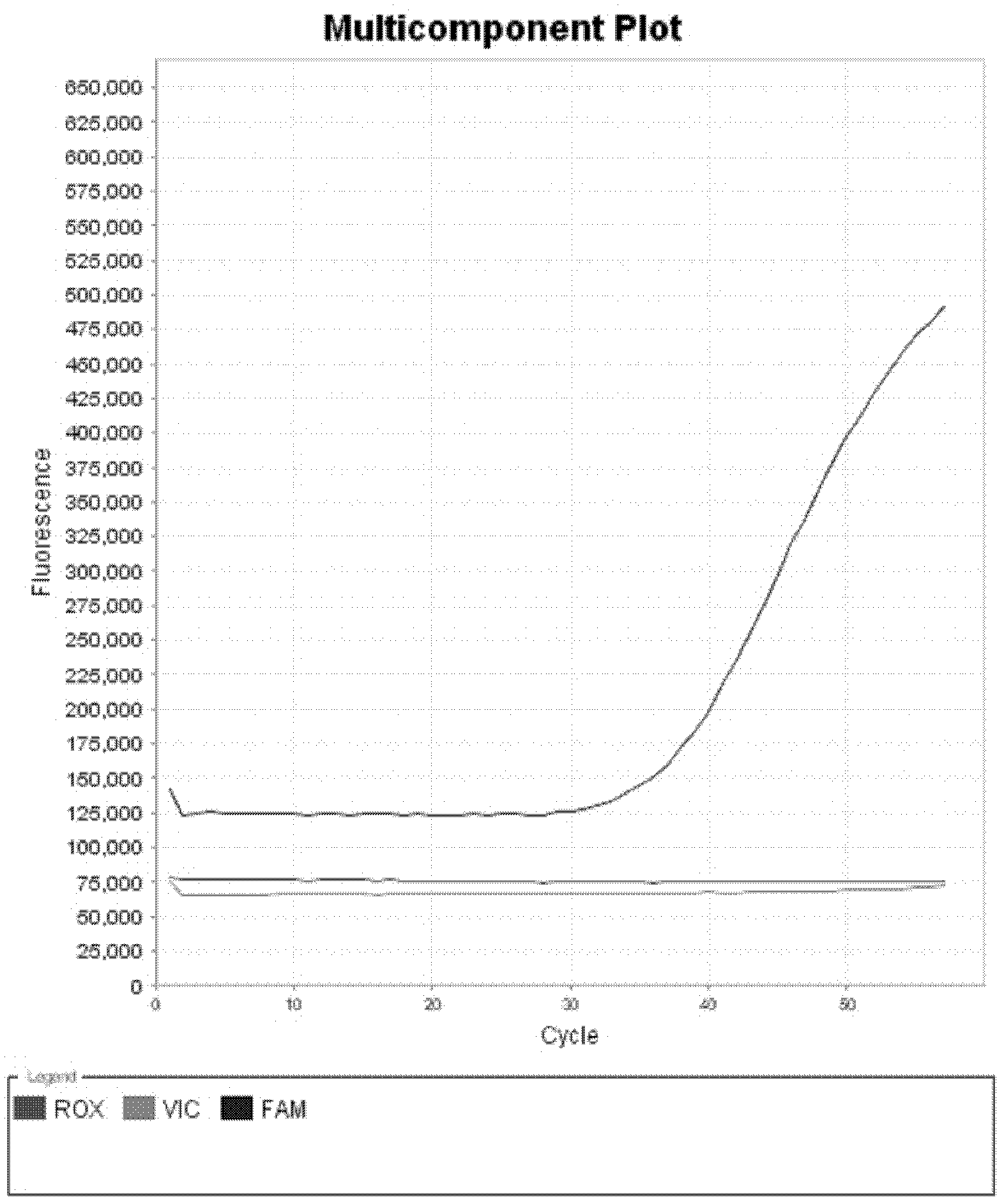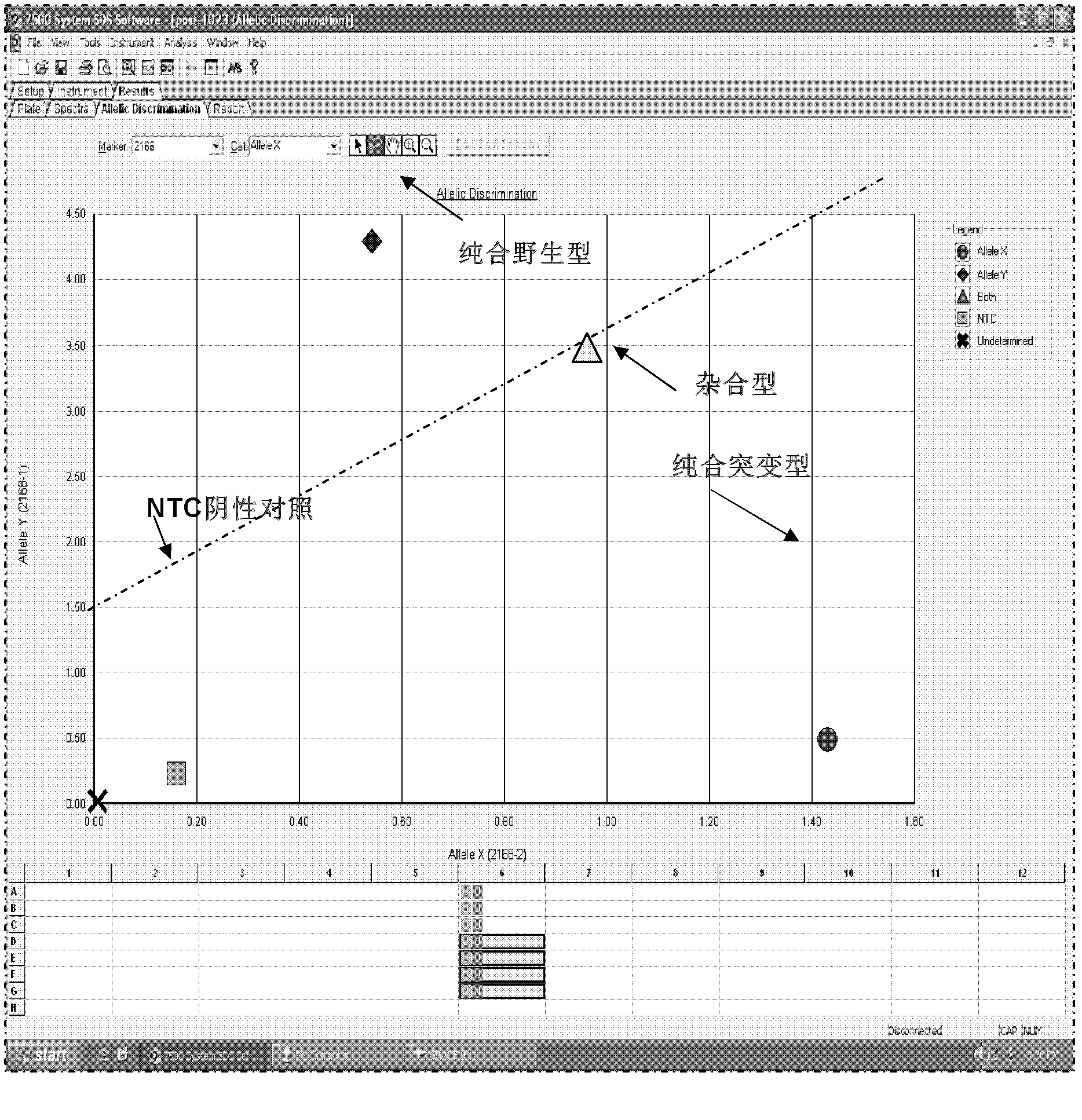Probe and kit for detecting common mutations of large vestibular aqueduct-related deafness gene
A deafness gene, large vestibular technology, applied in DNA/RNA fragments, recombinant DNA technology, etc., can solve the problems of high cost, long time, and unsuitable for large-scale screening.
- Summary
- Abstract
- Description
- Claims
- Application Information
AI Technical Summary
Problems solved by technology
Method used
Image
Examples
Embodiment Construction
[0076] The present invention will be described in more detail below in combination with specific embodiments.
[0077] 1. Test samples
[0078] 100 patients with sensorineural deafness were selected from the Deaf Disease Resource Bank of the Molecular Diagnosis Center for Deaf Diseases of the Chinese People's Liberation Army General Hospital, and peripheral whole blood DNA was extracted from the individuals tested as test samples.
[0079] 2. Probe and Primer Design
[0080] According to the published SLC26A4 gene sequence (SEQ ID NO: 1, Ensembl Gene IDENSG0000009113), use the Genetool Lite program to assist in the design of primers and Taqman probe sequences, wherein:
[0081] The forward and reverse primers are located in the relevant region shown in the sequence SEQ ID NO: 1 of the autosomal recessive large vestibular aqueduct-related deafness gene SLC26A4: the forward primer for the IVS7-2A>G mutation is located at 23360bp-23391bp, The reverse primer is located at 23438b...
PUM
 Login to View More
Login to View More Abstract
Description
Claims
Application Information
 Login to View More
Login to View More - R&D
- Intellectual Property
- Life Sciences
- Materials
- Tech Scout
- Unparalleled Data Quality
- Higher Quality Content
- 60% Fewer Hallucinations
Browse by: Latest US Patents, China's latest patents, Technical Efficacy Thesaurus, Application Domain, Technology Topic, Popular Technical Reports.
© 2025 PatSnap. All rights reserved.Legal|Privacy policy|Modern Slavery Act Transparency Statement|Sitemap|About US| Contact US: help@patsnap.com



